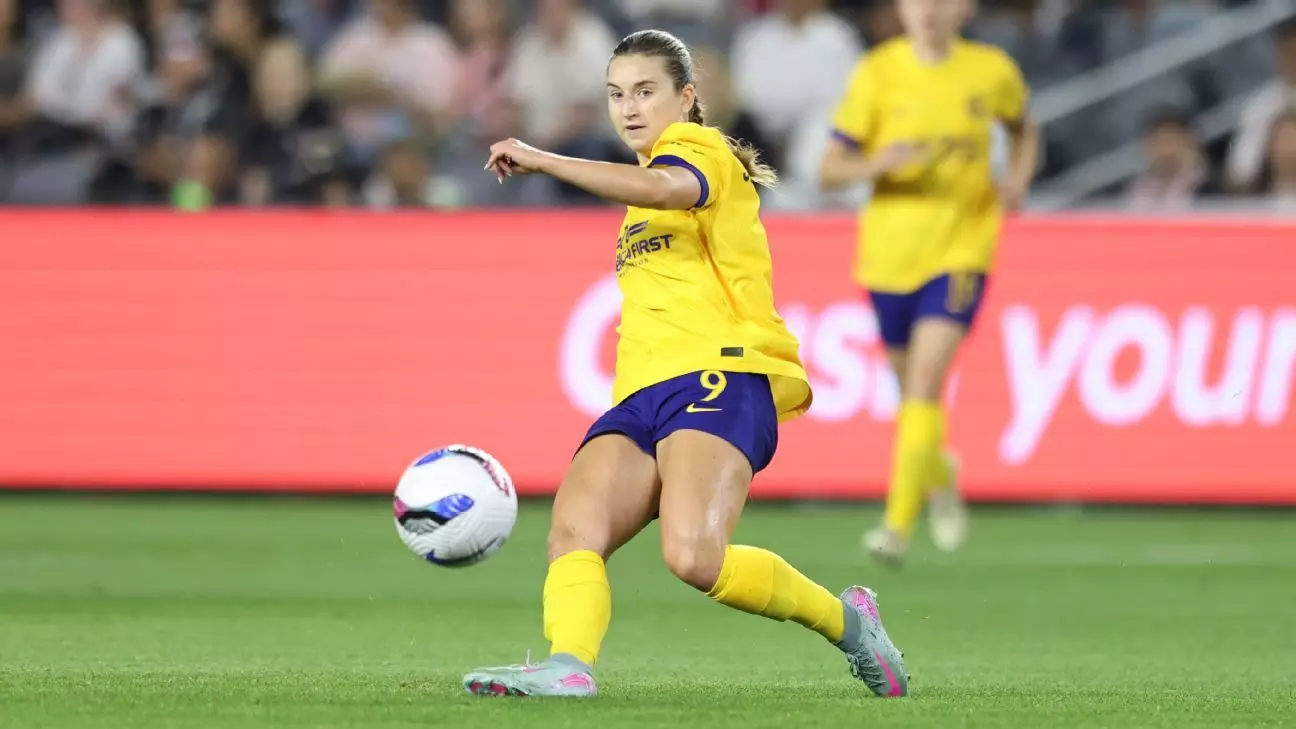The recent transfer of Ally Sentnor from Utah Royals to Kansas City Current signals more than just a player movement; it marks a transformative milestone for the NWSL’s financial landscape. With an intra-league transfer fee of $600,000, this deal breaks previous records and underscores the league’s rising valuation and increasing recognition of player market value. Such a hefty sum illustrates a shift toward valuing young talent and strategic investments, challenging the traditional notion that women’s sports are less commercially viable.
The structure of the transfer reveals strategic financial planning, with payments spread out over multiple years to minimize immediate financial impact on Kansas City. The inclusion of a future sell-on clause—providing Utah with 20% of future transfer proceeds—is a savvy move. It suggests that teams are beginning to think long-term about player development and future earnings, aligning incentives for both clubs to nurture top-tier talent. This approach highlights a maturing league where financial sophistication meets competitive ambition.
Ally Sentnor’s Rising Profile & Impact on the League
Sentnor’s trajectory from being the first pick in the 2024 NWSL Draft to a key figure on the U.S. Women’s National Team reflects her exceptional potential. Her scoring record may not be overwhelming yet—a single goal and assist this season—but her work ethic, versatility, and youthful promise have earned her recognition as the 2024 U.S. Young Female Player of the Year. This transfer is not just a financial transaction; it’s an investment in future leadership for Kansas City.
The move also reveals the tactical shift within the league. Kansas City, already top of the standings, recognizes the importance of bolstering their attacking options. Her addition promises to enhance their offensive potency, potentially giving them an unassailable edge as they look to cement their dominance. Conversely, Utah’s willingness to trade a promising homegrown talent for immediate financial gain may signal a strategic repositioning, perhaps focusing on development or financial stability.
The Broader Implications for League Dynamics
This deal prompts a broader reflection on the evolving nature of the NWSL’s competitive and financial environment. Even as Utah has struggled on the field, the transaction demonstrates a willingness to prioritize financial health and league valuation over retaining struggling teams or developing talent in isolation. The league’s move toward commercially strategic player trades indicates a maturing ecosystem that values economic sustainability alongside on-field success.
Furthermore, Kansas City’s aggressive pursuit of star power, coupled with their already formidable roster, raises questions about competitive balance. Their ability to acquire such a valuable player at a high cost might send ripples through the league—potentially fostering a bidding war mentality or prompting other front-runners to rethink their talent strategies.
This transfer also exemplifies a broader trend of franchise development in women’s soccer, emphasizing profitability, player agency, and league stature. As teams increasingly see the value of investing in top prospects, the NWSL stands to evolve into a more lucrative, competitive landscape—one that could reshape perceptions and opportunities for women’s sports on a global scale.

